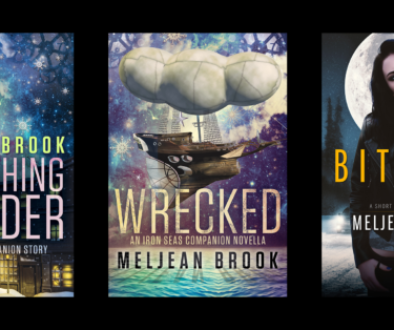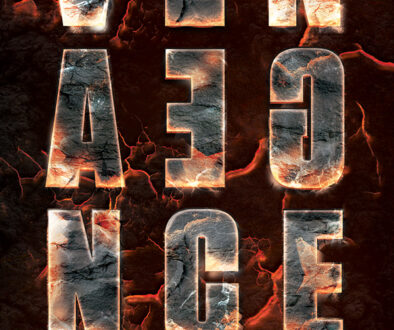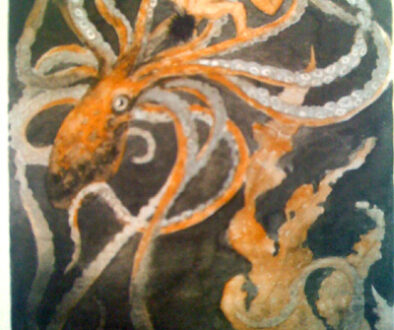Steampunk Q&A – Part 5
Here are more of Maili’s questions – and my (sometimes overlong) answers.
d) What’s the difference between a Steampunk novel and a Gaslight fantasy novel? What about alternative historical novels like Kim Newman’s Anno Dracula?
Agh. I always feel a little weird when I get into this, because although I’m happy to talk my mouth off about steampunk, when it comes to other genres I’m not as comfortable saying: This is what they are/aren’t. So let me preface everything that I say with the caveat that these are my impressions of the differences between genres, based on my (could be faulty) understanding of them.
First of all — just because a historical-set novel includes something like an airship or a scientist, that does NOT make it steampunk. Scientists really did exist in history, after all; so did airships. So did submersibles. So did Wimshurst machines. So did Leyden jars. These are all things that existed in true history, and their use or appearance in a historical novel can be fun, but it isn’t necessarily steampunk. There needs to be an application and/or an evolution of that technology that ventures beyond the reality of history.
So, imagining the inclusion of technology in historical set works as a sliding scale, a historical novel that includes steam technology but no real science fiction application of it is just … well, it’s a historical novel.
Then there’s gaslight fantasy/gaslamp fantasy (I’ve seen it called both and I don’t know if there’s a difference; if there is, please someone feel free to tell me in comments! I don’t mind being called out as ignorant, because then I can know better and not be ignorant anymore.) – To me, gaslight fantasy is more explicitly Victorian (because the ‘gaslight’ part immediately brings to mind London streets; I can’t help it.) It also includes some sort of magic/fantasy…and here is where I might be completely wrong, but that magic/fantasy is more occult-type of magic rather than, say, a werewolf or vampire running around the city. I always think of it as more like ghosts and weird-paranormal magic rather than an abundance of supernatural creatures. In addition, I always think of gaslight fantasy as having a certain oppressive atmosphere that feels almost gothic in nature.
But again, it’s a sliding scale. It’s not that gaslight fantasy can’t include vampires or werewolves, because it can. But what is the overall feel of the book and what is the underlying basis of the ‘difference’ from the real world? If you’ve just got a Victorian-set historical populated by vampires, that’s not gaslight — it’s a historical paranormal romance. If you’ve got arcane societies practicing dark magic, if you’ve got ghosts, if you’ve got a dark, wet atmosphere — and there just happens to be a vampire around, too? That feels, to me, more like gaslight fantasy.
The key always seems to be: What is the difference from the ‘real’ world, and what is the driving force behind that difference? What is the mechanism through which the world is changed?
In steampunk, that mechanism is science-based. In gaslight fantasy, it will be magic-based. I made up this little graphic for my workshop in San Diego. I’m not completely happy with it, but it gives a visual representation of that sliding scale that I’m talking about. You can click to enlarge it.

The more supernatural elements you have, the more magic, the more paranormal beings, the more that it is gaslight fantasy … even if it has a few gadgets or airships here and there.
Then there are alternate histories. Maili mentions Anno Dracula, but although I’ve read it, it was during my Anne Rice craze in 10th or 11th grade and I can’t recall exactly the differences in the world itself, and how much science fiction/magic was involved. Generally, however, I would say that an alternate history is one where there is a break from real history, and even though the course of the world might have changed dramatically (and that includes a different trajectory for technological and social evolution), that break in history and the social/cultural impact is the driving element behind the differences in the world, rather than magic or science, even if magic or science (or a supernatural creature) was the cause of the break.
And again, it’s not that a book has to be completely one or the other. The Iron Seas series is an alternate history — and that break came when Batu Khan became the Great Khan rather than one of Ögedei’s heirs. The driving force behind the differences in the world, however, is the technology created by the Horde, along with the technology created by those trying to stop them (and later the tech created as they adjust to their new world).
e) Does historical accuracy matter in a steampunk novel?
Yes and no. It doesn’t have to be accurate in the sense that events happen in the same way (in a historical novel, the date of certain battles are either accurate or they aren’t — but that battle might not even take place in a steampunk/alternate history novel.) It does have to be accurate, however, in that the worldbuilding has to be internally consistent and make sense. It has to be accurate in that, if something is out-of-place to that time, there has to be a reason behind it.
The technology (and everything else) can be anachronistic from *our* perspective. It can’t be anachronistic from the perspective of the characters and the world; it has to fit, it has to make sense — it has to be accurate according to the rules of that world.
f) what’s the difference between a steampunk romance and a steampunk novel?
I have no idea. Obviously the romance is the primary plot/story within a steampunk romance, but my difficulty comes because I have no idea what a steampunk novel looks like. The more I think about it, the more most steampunk seems to be a subgenre of something else — mysteries and adventure novels being the most popular. I’m often torn between calling steampunk its own genre, and just calling it a ‘setting.’
(I’m excluding steampunk art from this, by the way, as well as the steampunk lifestyle. I think that those are very clearly their own. But in literature, I honestly don’t know if it’s self-contained as its own genre.)
I would love to hear other thoughts on this, actually. Does steampunk feel like its own genre, and what books/movies would you use as examples of a steampunk genre?
g) What web sites and blogs would you recommend for us who want to learn more about steampunk?
I mentioned Beyond Victoriana last time. Also, every October, the publisher Tor has a steampunk month on their blog, and I think it’s worth checking out the articles and essays on steampunk (most easily found with the ‘steampunk’ tag).
For romance, The Galaxy Express does a great job of keeping SF romance readers apprised of upcoming steampunk titles — and is also great for links.
Girl Genius online — because it’s fun. The same goes for 2D Goggles (a.k.a. The Thrilling Adventures of Lovelace and Babbage.)
Airship Ambassador has a huge number of links to definitions, art, all kinds of stuff. The Steampunk Chronicle has great links, too.
Also, because the visual aspect is so strong (I’ll admit that I don’t read a lot of steampunk blogs aside from Beyond Victoriana, but I do love to go searching for artwork) I love pointing to sites like Deviant Art and simply searching for steampunk. When CGSociety was having their Myths and Legends steampunk art challenge, it was the greatest thing ever — and the winners (to which I just linked) are fantastic, but there was a lot of work showing up in the forums that was spectacular as well.
I know there are blogs and tumblers out there that repost steampunk art, but I usually just end up doing Google searches instead. If you know of any great steampunk blogs, please post a link in the comments!
h) Which films would you recommend for us who need to see what steampunk is like before we could read a steampunk romance/novel?
I’m saving this until tomorrow/Friday, because it will be another long answer (and Maili sent me some awesome links to videos, too, and I want to include those.)
g) Will your ‘Iron Seas’ map ever see the daylight?
Okay, well. I didn’t scan them in, because the more I thought about it, the more I realized that a lot of what is on those maps will either be spoilerish/will be more fun to develop in the books themselves. It’s not that I’m trying to be secretive, it’s just that I want to save some stuff to be revealed in the books, and the maps totally give it away.
But I totally understand that readers want a general history and a way to better visualize the world, and so instead of scanning it in, I spent time last night on a map in Photoshop, and on sketching out a general history on a page. It’s crude, the boundaries are not exact, it’s vague in some areas, it’s definitely a work-in-progress — but I hope it helps visualize the world a little better.
So, here’s a rudimentary Iron Seas guide. Please feel free to ask questions about it in the comments here.
Also, er — the fact that Ireland is orange doesn’t signify anything. I just wanted to make it clear that its fate was not linked to England/Wales/Scotland’s, and chose a contrasting color, and only later did I realize that it could be taken as a statement re: religion.



